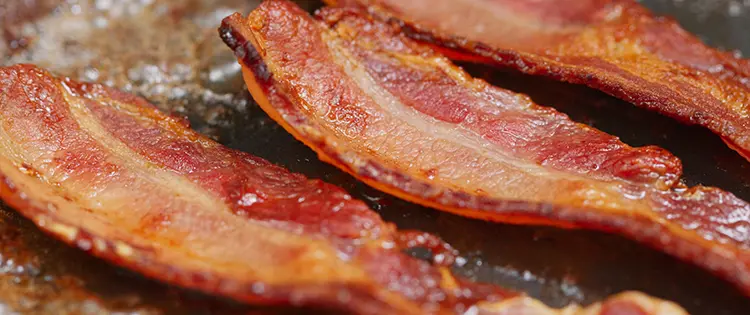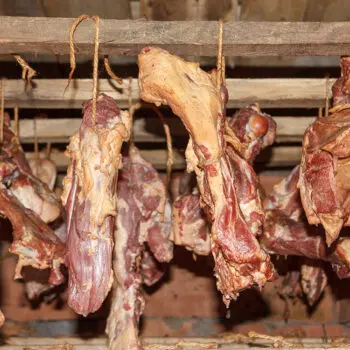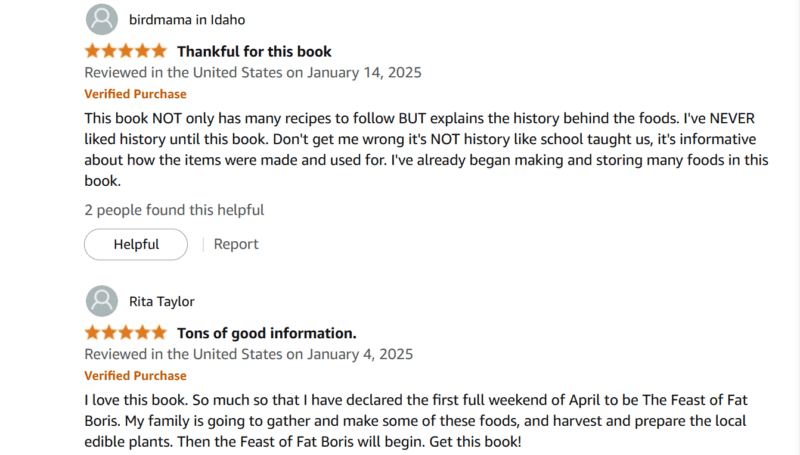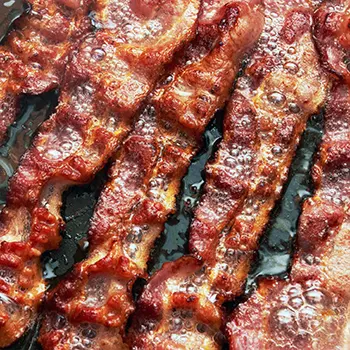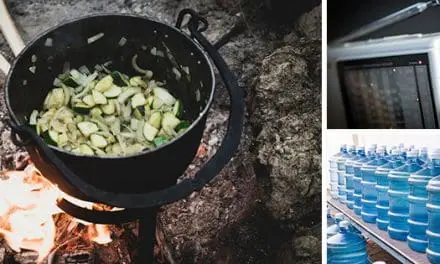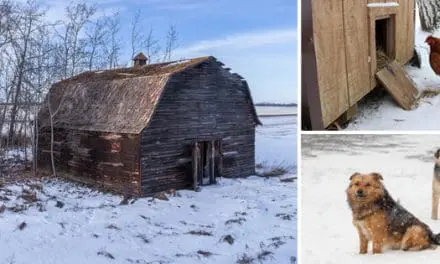Bacon’s preservation spans centuries of homesteading knowledge, with techniques passed down through generations of self-sufficient families. If you’re wondering how to store bacon so it lasts for years, I’ve got the answer for you.
I’ve spent considerable time exploring these traditional methods while living off-grid in Montana, where keeping meat fresh without modern refrigeration becomes crucial.
The secret to storing bacon long-term lies in understanding time-tested preservation techniques that our ancestors used effectively.
Bacon storage doesn’t require fancy equipment or complex methods. Our great-grandparents kept bacon edible for months or even years using simple ingredients like salt, smoke, and natural cooling.
My neighbor Jim, a third-generation homesteader, still uses his grandfather’s bacon preservation methods, keeping his family supplied with home-cured bacon throughout the year.
Old Ways to Store Bacon So It Lasts for Years
Packing Bacon in Salt Boxes 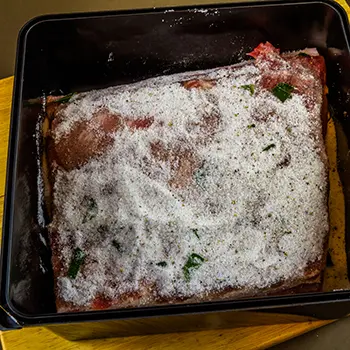
Salt boxes preserve bacon through complete salt coverage, a method dating back centuries. The process requires a wooden or ceramic box, coarse salt, and careful layering. Start by creating a base layer of salt at the bottom of the box.
Add a single layer of bacon on top, ensuring each strip is entirely surrounded by salt. Repeat the process—salt, bacon, salt—until the box is full. The salt works by drawing moisture out of the bacon, effectively creating an inhospitable environment for bacteria and mold.
To store bacon so it lasts for years, the key to success is maintaining a cool, dark storage environment, such as a cellar, where the temperature remains stable.
Store Bacon so it Lasts for Years by Wrapping it in Cloth and Lard
This old-fashioned method combines rendered lard and unbleached muslin cloth to preserve bacon effectively without refrigeration. Begin by melting clean, high-quality lard over low heat until it reaches a smooth, liquid consistency.
Dip cured strips of bacon into the melted lard, ensuring they are thoroughly coated. Quickly wrap each coated piece in unbleached muslin cloth while the lard is still warm and pliable.
The lard forms an airtight seal, while the cloth allows minimal airflow, reducing the risk of spoilage while keeping moisture levels in check. Store the wrapped bacon in a cool, dark cellar, either hung from wooden rafters or placed in sturdy wooden boxes.
This technique, when executed properly and stored at temperatures below 60°F, keeps bacon edible for six to eight months. In fact, lard is an essential part of Amish food preservation, and it’s used to store a variety of other foods as well. Here are 10 foods the Amish store in lard.
Smoking Bacon for Preservation 
Smoking extends bacon’s shelf life through a combination of dehydration and chemical changes in the meat. Traditional smokehouses achieved impressive preservation results, with properly smoked bacon lasting up to 18 months.
Working alongside experienced homesteaders taught me that temperature control makes the difference between perfectly preserved bacon and a failed batch.
Cold smoking keeps temperatures below 90°F, focusing on flavor development and preservation rather than cooking. This process takes longer, typically 12-48 hours, but results in bacon that stores exceptionally well.
The smoke particles coat the meat’s surface, creating a protective barrier against harmful bacteria. Many old-timers prefer cold smoking for its superior preservation qualities.
Hot smoking raises temperatures to 165°F, effectively cooking the bacon while smoking it. This method produces bacon ready for immediate consumption but generally stores for a shorter period than cold-smoked varieties.
I’ve known and used this method for a while now, as my grandpa taught me. Recently, I came across a very similar method in this guide. The lost survival food knowledge in this guide is so well-organized that anyone—even those with no prior cooking or stockpiling experience—can benefit from it.
Everything is explained in a clear, step-by-step way, with colored pictures and easy-to-follow instructions. You don’t necessarily have to take my word for it; the reviews for this book speak for themselves.
Store Bacon so it Lasts for Years – Confit Bacon
Confit, a preservation technique originating in France, is a unique way to store bacon while enhancing its flavor and texture. Begin by slicing bacon into thick cuts.
Slowly cook the pieces in rendered bacon fat over low heat until they are tender and fully cooked but not overly crispy. Transfer the cooked bacon into sterilized jars, packing the pieces tightly but leaving enough space for the fat to fill the gaps.
Pour the hot fat over the bacon, ensuring it is fully submerged with no air pockets. Seal the jars tightly and store them in a cool, dark place. The bacon remains preserved for up to six months, with the fat acting as both a preservative and a flavor enhancer.
Rendering Bacon Fat for Shelf-Stable Storage 
Rendering bacon fat is an excellent way to create shelf-stable cooking fat and preserved meat pieces. Start by cutting the bacon into small, uniform pieces to ensure even cooking.
Place the pieces in a heavy-bottomed pan over low heat, allowing the fat to render slowly while the bacon crisps. Once the fat has liquefied and the bacon bits, or lardons, are golden and crispy, strain the liquid fat through a cheesecloth into sterilized jars.
Pack the crispy lardons separately in airtight containers. To store bacon so it lasts for years, the rendered fat, when stored in a cool, dark place, remains shelf-stable for months, while the lardons last for several weeks. This method maximizes the utility of bacon, providing both a versatile cooking fat and a flavorful addition to meals.
Store Bacon so it Lasts for Years by Packing it in Beeswax Coating
Beeswax coating offers a creative and natural way to preserve bacon for months. Melt food-grade beeswax in a double boiler until it reaches a smooth, liquid state. Dip cured strips of bacon into the melted beeswax, ensuring they are fully coated.
Allow the wax to cool and harden, forming a protective barrier around each strip. The beeswax prevents oxygen exposure, moisture loss, and bacterial contamination while maintaining the bacon’s original flavor and texture.
Store the wax-coated bacon in a cool, dark place, such as a pantry or cellar. When ready to use, peel off the beeswax coating, which can be melted down and reused for future preservation.
Storing Bacon in Underground Coolers
Underground coolers, like root cellars or spring houses, have been trusted for generations to store perishable goods like bacon. These coolers maintain a stable environment with temperatures between 35°F and 55°F, ideal for preservation.
To store bacon so it lasts for years, wrap it in wax paper, muslin cloth, or cloth coated in lard for added protection, and hang it from ceiling hooks or store it in covered wooden containers on shelves.
Spring houses, which use flowing water to create an even cooler environment, are especially effective for long-term storage. Properly stored in these cool, humid conditions, bacon can last for months, maintaining its flavor and texture.
Signs That Stored Bacon Has Gone Bad
Spoiled bacon presents clear warning signs through distinct changes in smell, texture, and appearance. A sour, rancid odor indicates bacterial growth and means immediate disposal is necessary. Your nose serves as the first line of defense against consuming spoiled bacon.
Physical changes offer reliable indicators of spoilage. Fresh preserved bacon maintains a firm texture and even coloring. Watch for these warning signs:
| Indicator | Fresh Bacon | Spoiled Bacon |
|---|---|---|
| Color | Even pink/brown | Green/gray patches |
| Texture | Firm, dry | Slimy, sticky |
| Smell | Sweet, smoky | Sour, rotten |
| Surface | Clean, dry | Moldy, wet |
Common Storage Mistakes That Lead to Spoilage
These include inconsistent temperature, moisture exposure, and inadequate salt coverage. Cross-contamination from handling stored bacon with unclean hands introduces harmful bacteria. Storing bacon near strong-smelling foods leads to absorbed odors and accelerated degradation.
To store bacon so it lasts for years, regular inspections prevent waste and ensure safety. Check stored bacon monthly for signs of deterioration. Remove any pieces showing early spoilage to prevent contamination spread. Track storage dates carefully – even well-preserved bacon eventually degrades.
👉 Common Food Storage Mistakes Even the Most Experienced Homesteaders Make
Bacon and Dried Bean Soup Recipe
There are plenty of tasty long-lasting recipes you can make with bacon, but I want to share my personal favorite—bacon and dried bean soup. This hearty, flavorful dish has been a staple for generations because of its simplicity and long shelf life. If dehydrated, it can last up to a year.
If frozen and not canned, it stays good for up to six months. But if pressure-canned and stored in a cool, dark place, this soup can last over three years, making it an excellent option for homesteaders looking to preserve food. 
To make this soup, start by soaking dried beans overnight to soften them and reduce cooking time. Any variety of beans will work, but pinto, navy, or great northern beans are great choices for this dish. The next day, drain and rinse the beans, then set them aside. In a large pot, cook chopped bacon until it becomes crispy and releases its rich, smoky fat. Remove the bacon and set it aside, leaving the rendered fat in the pot to enhance the flavor.
Related: Forgotten Nose-to-Tail Recipes Every Homesteader Should Know
In the same pot, sauté chopped onions, carrots, and celery in the bacon fat until they soften. This step builds the soup’s deep, savory base. Once the vegetables are ready, return the bacon to the pot and add the soaked beans along with water or broth. If you want a heartier soup, you can also throw in diced potatoes or tomatoes. Season everything with salt, pepper, garlic, and a pinch of thyme or bay leaves for extra depth.
Bring the soup to a boil, then reduce the heat and let it simmer for a few hours until the beans are tender and the flavors meld together. If you plan to eat the soup right away, simply serve it hot with a slice of homemade bread. For long-term storage, you can either dehydrate it, freeze it, or pressure-can it.
To dehydrate, spread the soup on a dehydrator tray or a lined baking sheet and dry it at a low temperature until it becomes brittle. Store the dried soup in an airtight container. To freeze, let the soup cool completely before pouring it into freezer-safe containers, leaving some space for expansion.
For pressure-canning, ladle the hot soup into sterilized jars, leaving about an inch of headspace, and process them in a pressure canner according to the USDA guidelines for canning soups.
Whichever method you choose, this bacon and dried bean soup will be a reliable, nourishing meal that’s easy to store and enjoy whenever you need it. Whether you’re preparing for winter or simply looking for a homemade meal that lasts, this recipe is a must-have in any homesteader’s kitchen.
Wrapping Up
Select high-quality meat, control environmental factors, and choose a preservation method that suits your situation. Remember, combining methods often yields the best results—smoking followed by saltbox storage or dry curing before confit adds multiple layers of protection against spoilage. This way, you can store bacon so it lasts for years.
Keep detailed notes on what works best in your specific climate and storage conditions, and don’t forget to share your findings with us in the comment section!
10 Ways You Should Use Bacon Fat
How to Get 295 Pounds of Extra Food for Just $5 a Week (Video)
Root Cellar Mistakes You Need To Avoid At All Costs

